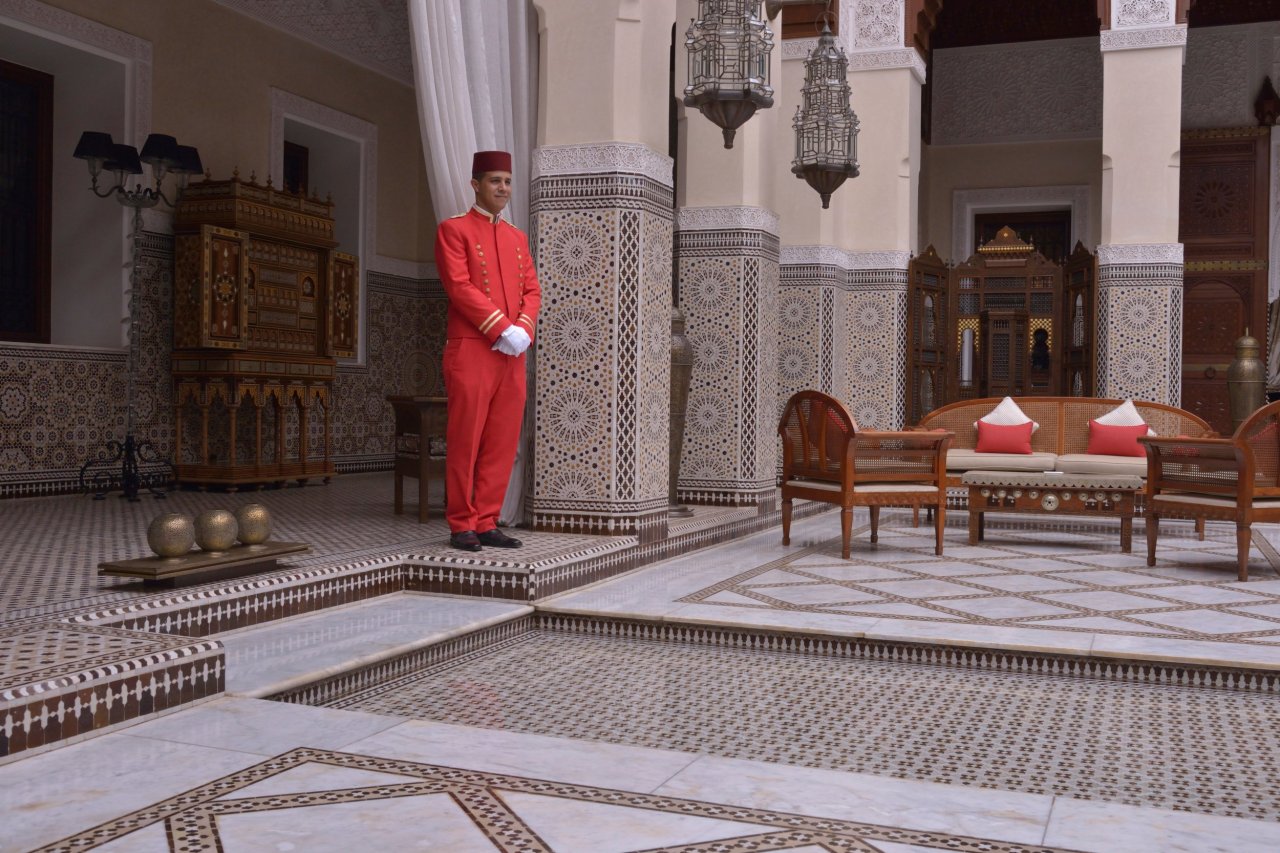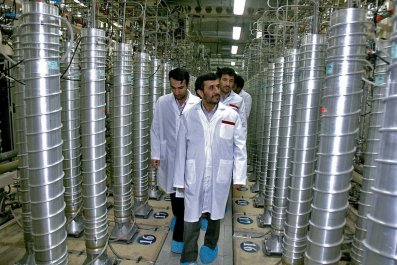An hour after my plane lands at Marrakech's gleaming, modern international airport, I find myself stuck in a huge traffic jam. My taxi inches forward, navigating donkey carts, pedestrians with towering bundles on their shoulders, battered saloon cars from the 1950s, camels, horse-drawn wagons and hundreds of weaving, swerving mopeds. At a major intersection near the center of the city, a traffic policeman waves his arms but has little hope of controlling the wonderful chaos.
The city's thrilling energy and its proximity to Europe have drawn generations of affluent European travelers. Winston Churchill visited, as did Édith Piaf, Maurice Chevalier and Yves Saint Laurent (who bought the lovely Villa Majorelle and whose ashes are buried in its gardens). Hippies and rock stars came in the '60s and '70s, and it remains a lure for celebrities. The draw has always been the same: a unique mixture of urban intensity with the sense of escaping to a magical, distant place.
For most visitors, the pink-walled medina—the old city—is the primary attraction of Marrakech. Many head initially for Jemaa el-Fna, the main square and open-air space that may be touristy but is unlike any other place on Earth. Here, you'll encounter monkey handlers, snake charmers, dancers, magicians, and peddlers of traditional medicines—along with hundreds of food stalls. The souks (marketplaces), whose various entrances are tucked behind and above restaurants and cafés at the edges of the square, sell perfumes, spices, bags, clothing, baskets, shawls, carpets and shoes.
The Marrakech excursion I would most recommend is a ride through the narrow, crowded side streets of the city on a vintage Ural M72 sidecar. I spent an afternoon with Felix, who was not only skilled at weaving the M72 through the chaotic traffic but was also an extremely knowledgeable guide.
Another highlight is a walk through the Jewish mellah quarter and a visit to Lazama Synagogue, one of the few remaining active synagogues in the city. In the 1940s, a quarter-million Jews were living in Morocco; today, barely 3,000 remain, and in Marrakech there are only around 250. The mellah neighborhood was established in the 1500s, and the original synagogue was built on this site around that time by Jews who had fled the Spanish Inquisition. The current synagogue was built at the turn of the 20th century, restored a decade ago and is in great condition, with bright blue and white tiles and matching curtains and cushions. It is a tranquil retreat in a city that is constantly bustling.
That bustle can, toward the end of the day, become tiring. You'll need a peaceful place to stay. For most of the post–World War II years, La Mamounia, built in 1923, was the only hotel in town for affluent travelers seeking to escape the European winter. The past decade has seen a dramatic increase in hotel-building in the city, but no hotel can quite match La Mamounia for history and atmosphere.
The grandest new option is Royal Mansour, a lush, 8-acre estate dotted with lily ponds, fountains and flower beds. Built as a showcase for Moroccan craftsmanship at the behest of King Mohammed VI, the hotel opened in 2010 and is adorned with intricate zelij (geometric mosaics), carved cedar wood, beaten bronze and inlaid marquetry. Each of the 53 two-story riads has a sitting room with an open fireplace on the ground floor, extravagant bedrooms on the first floor and a plunge pool on the roof terrace.
The riads are serviced by a network of subterranean passageways, designed to ensure visitors almost never see staff on the guest floor. As a result, you hardly encounter other human beings—staff or fellow guests—except when you're in one of the three restaurants or the reception area. The overwhelming impression at the Royal Mansour is that you have a Moroccan palace to yourself. It feels like a great luxury—but is slightly unnerving.
The food in this virtual private palace is superb. One of the hotel's two restaurants, La Grande Table Marocaine, offers the best Moroccan haute cuisine in the city in a beautiful, romantic room of carved archways, lattice and lanterns. The aromatic pigeon pastillas , sh'hiwates (Moroccan salad), m'hamsa (grains) cooked with clams, beef tanija and the spice-infused chicken tajine are all outstanding. The other restaurant at Royal Mansour is La Grande Table Française; many critics consider it the best French restaurant on the African continent. Both are overseen by Yannick Alléno, the former three-star Michelin chef at Paris's Le Meurice.
The Royal Mansour is the city's most expensive hotel—the one- and two-bedroom riads cost between $870 and $2,500 a night in low season and $1,100 and $2,850 in high season. But compared with the cost of high-end bed and board in other major tourism destinations, that represents extreme opulence at a bargain price. While there is political unrest in the region, all quoted hotel prices are, like the goods on sale in the souks, up for negotiation. Which means, for the moment, the Paris of the Sahara, as Churchill called Marrakech, is something of a steal.





















